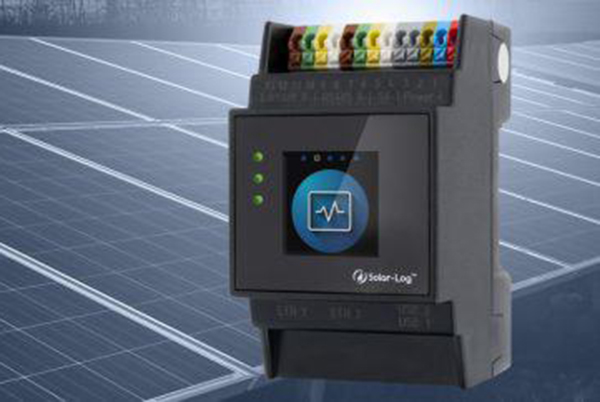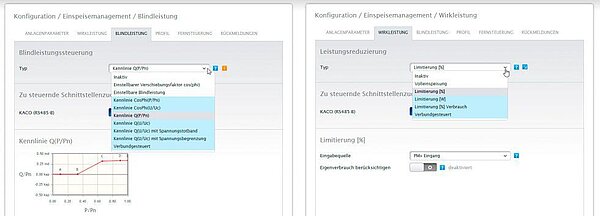Feed-in Management in the Medium-Voltage Grid
In 2012, Solar-Log GmbH was one of the first manufacturers to launch a solution for PV plant feed-in management. With the Solar-Log energy management system, PV plants of any size can meet the corresponding requirements.
In 2019, a new regulation, the so-called VDE-AR-N 4110 (VDE 4110), has now arrived. This is intended to ensure grid stability in the medium-voltage grid, as there is a strong increase in PV systems. Such or similar rules are now also being applied in many other countries with increasing numbers of renewable energy. The new regulation in Germany affects all PV systems that have their grid connection point at the medium-voltage grid of a grid operator.
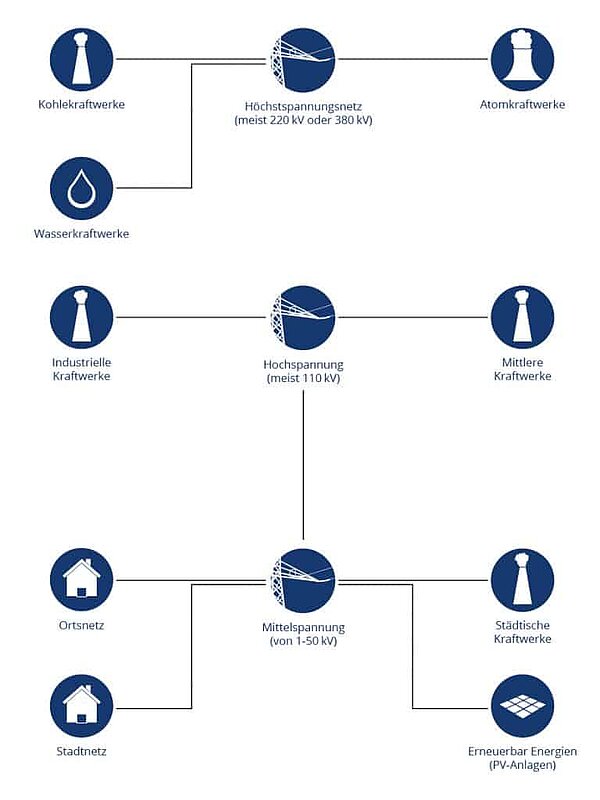 Figure 2: The graphic shows which plants belong to the medium-voltage grid.
Figure 2: The graphic shows which plants belong to the medium-voltage grid.
The VDE-4110 regulation also became necessary because the European internal energy market is to be further developed. The new requirements were laid down in the European Internal Electricity Market Directive and the Internal Electricity Market Regulation. The aim is to create a smooth electricity market in the EU that also functions across borders. In addition, the aim is to generate more competition and establish a transparent wholesale market. (Source: Centralized and decentralized elements in the energy system, National Academy of Sciences Leopoldina, acatech - German Academy of Science and Engineering, Union of the German Academies of Sciences and Humanities, 2020) Thus, the new VDE regulation is a component of the European requirements, which also affect many other countries in the EU or will affect them in the future.
Solution for Connecting the PV System to the Medium Voltage Grid
First of all, the question arises, what exactly do the new regulations require from plant owners or operators? The example of the German market shows how complex the requirements are (see Figure 3). These include, for example, various characteristic curves, such as Q(U) for stabilizing the voltage. In addition, it must be possible to retrieve various measured values such as P, Q, U and I. Only when these and other requirements are met can the PV system feed into the German power grid.
In demand: Feed-in Management in Practice
Roland Löhr is Technical Manager at Solar-Log GmbH, one of the leading PV monitoring, smart energy, feed-in management manufacturers worldwide. At Solar-Log, he and his team are responsible for implementing the VDE-4110 standard, among other things. In a short interview, he describes where the challenges lay and what benefits the standard brings to the PV industry.
What solutions does the Solar-Log system offer to implement these complex requirements?
One standard, many different requirements. This could be the headline above the VDE-AR-4110 standard. Not only are there new regulations, but the requirements for speed and accuracy in which the regulations must be implemented have also been tightened. This was one of the major challenges for us. Since we at Solar-Log were already at the forefront with the introduction of feed-in management, we were looking forward to this new project despite the many hurdles.
So the task was to expand the capabilities of the Solar-Log system in the area of active and reactive power in order to fulfill the requirements for plant control in the medium voltage by the respective grid operators. Almost every grid operator has different requirements for the PV system that feeds into "his" grid. This is why we now offer a whole range of control options. A positive side effect of this diversity is that the Solar-Log System is also prepared for PV plants in Switzerland and Austria, for example.
One of the most frequently requested solutions from the grid operators is shown in Figure 4. In order to fulfill the requirements or regulations, a data logger (Solar-Log Base 2000), a DIN rail power supply, the Modbus TCP and direct marketing licenses and a utility meter are required. This makes it possible to implement the respective requirements with all components such as inverter, data logger, remote control technology and direct marketer.
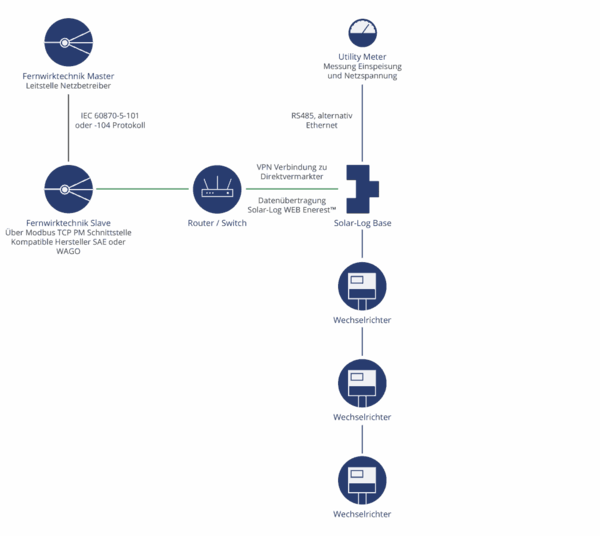 Diagram 4: Various components are needed to meet the requirements of the grid operators. In this example, an EZA controller with telecontrol + direct marketing and Q(U) or Q(P) characteristic is used.
Diagram 4: Various components are needed to meet the requirements of the grid operators. In this example, an EZA controller with telecontrol + direct marketing and Q(U) or Q(P) characteristic is used.
Can you explain the implementation again in more detail using a requirement that was newly added?
With pleasure. Relatively new to VDE-4110 is the Q (P/Pn) control or the Q(U) with voltage deadband. In the example (Figure 5 a), we have four different levels for this regulation. However, there are also network operators who require up to seven stages. Of course, we can also set these on the data logger.
Further down in Figure 5 b, you can see where the values must be maintained. So where they are measured and may be accordingly high. These points are, for example, at the transfer station or at the generation plant. In addition, it is clearly regulated what must be complied with in the event of a failure of the telecontrol or measurement technology. In this example, operation would then continue, using the last valid value received. All these settings can then be made in the Solar-Log system.
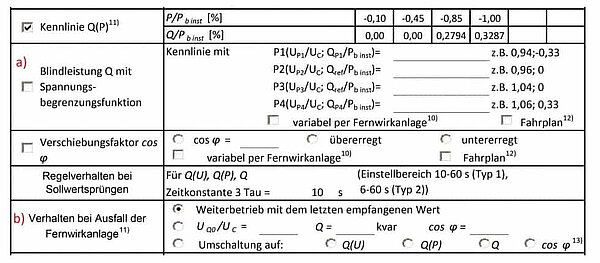 Figure 5: Questionnaire which requirements the grid operator places on the respective PV system.
Figure 5: Questionnaire which requirements the grid operator places on the respective PV system.
We have just seen the questionnaire that customers have to fill out. Does Solar-Log offer customers any other assistance in implementing the VDE regulation?
Yes. We are aware that the plant operator has to deal with a large number of requirements and bureaucracy and cannot be a professional in all areas. That is why we offer an all-round service or project support if required. This includes four steps where we:
- Inform the customer about the possible solutions to implement the required regulation.
- Plan and coordinate the solution with him and the network operator. Then we order the necessary components.
- Assist the customer in installing the components and setting them up.
- Take care of smooth commissioning and subsequent reporting.
How does the plant operator benefit? And how does it move the solar industry forward?
Basically, it's about ensuring grid stability and thus enabling as many RE and PV plants as possible to feed into the grid. In the future, the share of renewable plants should increase and the VDE regulation virtually creates the basis for this. In the long term, this alone will probably not be enough, but work is being done on grid expansion. This means that the PV industry and individual plant operators will benefit from the regulation, even if it initially means additional expense.
Can you give us another practical example?
We recently had an industrial company that had a photovoltaic system installed and wanted to feed its PV energy into the grid. This plant shows once again that individual solutions are often required for feeding into the medium-voltage grid. For the implementation of the Q(U) characteristic, the measurement at the grid connection point in the transformer station was required. For this, the Solar-Log requires the measured values of a compatible grid analyzer. Retrofitting this would have been very difficult, however, as the company's entire power supply would have had to be switched off.
However, it was possible to find another way together with the grid operator. The grid operator already had a corresponding measurement, and agreed to transmit the required measured values to Solar-Log via the Modbus TCP PM interface. This saved the customer a lot of time and money for the additional installation. We were also able to quickly complete the configuration and commissioning tests together with the installer and grid operator. In the end, the PV system was feeding into the grid on time and the customer had no additional effort.
Back to the overview
